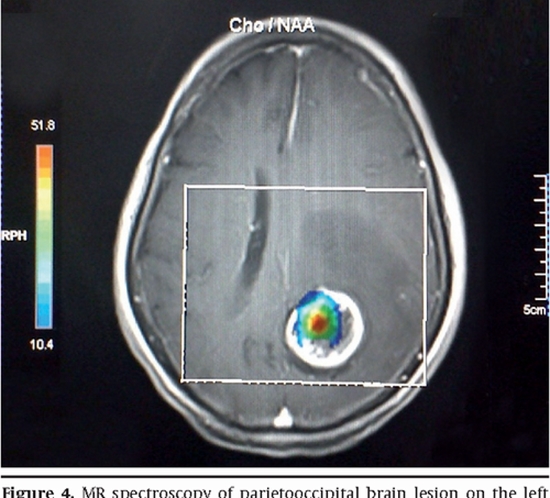The effects of voxel localization and time of echo on the diagnostic accuracy of cystic brain tumors in 3 tesla magnetic resonance spectroscopy
Selection of voxels with the guide of chemical shift imaging map yields to 100% diagnostic sensitivity. If not accessible, the use of the union of peripheral and central voxels enhances the sensitivity when compared to usage of peripheral or central voxels solely.

Background
Although magnetic resonance spectroscopy (MRS) has been shown as an effective diagnostic tool in distinguishing inflammation from neoplasm in cystic brain lesions, the optimum approach in selecting the portions of lesions in MRS and the possible effects of different times of echoes (TEs) remains unknown.
Objectives
To determine the most effective TE in diagnosing neoplastic lesions based on detecting choline (Cho), N acetyl aspartate (NAA) and creatinine (Cr). Moreover, the role of voxel localization on the diagnosis of the neoplastic nature of the lesions is assessed through comparing the abovementioned metabolite ratios in the rim and center of each lesion with the same TE.
Patients and Methods
In 16 patients with brain cystic tumors, MRS was performed at TEs of 30, 135 and 270 ms for detection of Cho, NAA and Cr metabolites using a 3 tesla MRI unit. The percentage of analyzed ratios greater than a cut-off point of 1.3 for Cho/Cr and 1.6 for Cho/NAA were calculated.
Results
Cho/Cr and Cho/NAA ratio means at all TEs were more at the central area in comparison with the periphery, although none of the differences were statistically significant. There was no statistically significant difference among the compared TEs. The percentages of ratios above the cut-off point at all TEs were more in the rim compared to the center and in the union of both compared to the rim or center. All the patients had at least one voxel with a Cho/Cr ratio of more than 1.3 when the voxel was chosen according to the hotspots shown in the chemical shift imaging map, regardless of their location at all examined TEs.
Conclusions
Selection of voxels with the guide of chemical shift imaging map yields to 100% diagnostic sensitivity. If not accessible, the use of the union of peripheral and central voxels enhances the sensitivity when compared to usage of peripheral or central voxels solely.






ارسال به دوستان